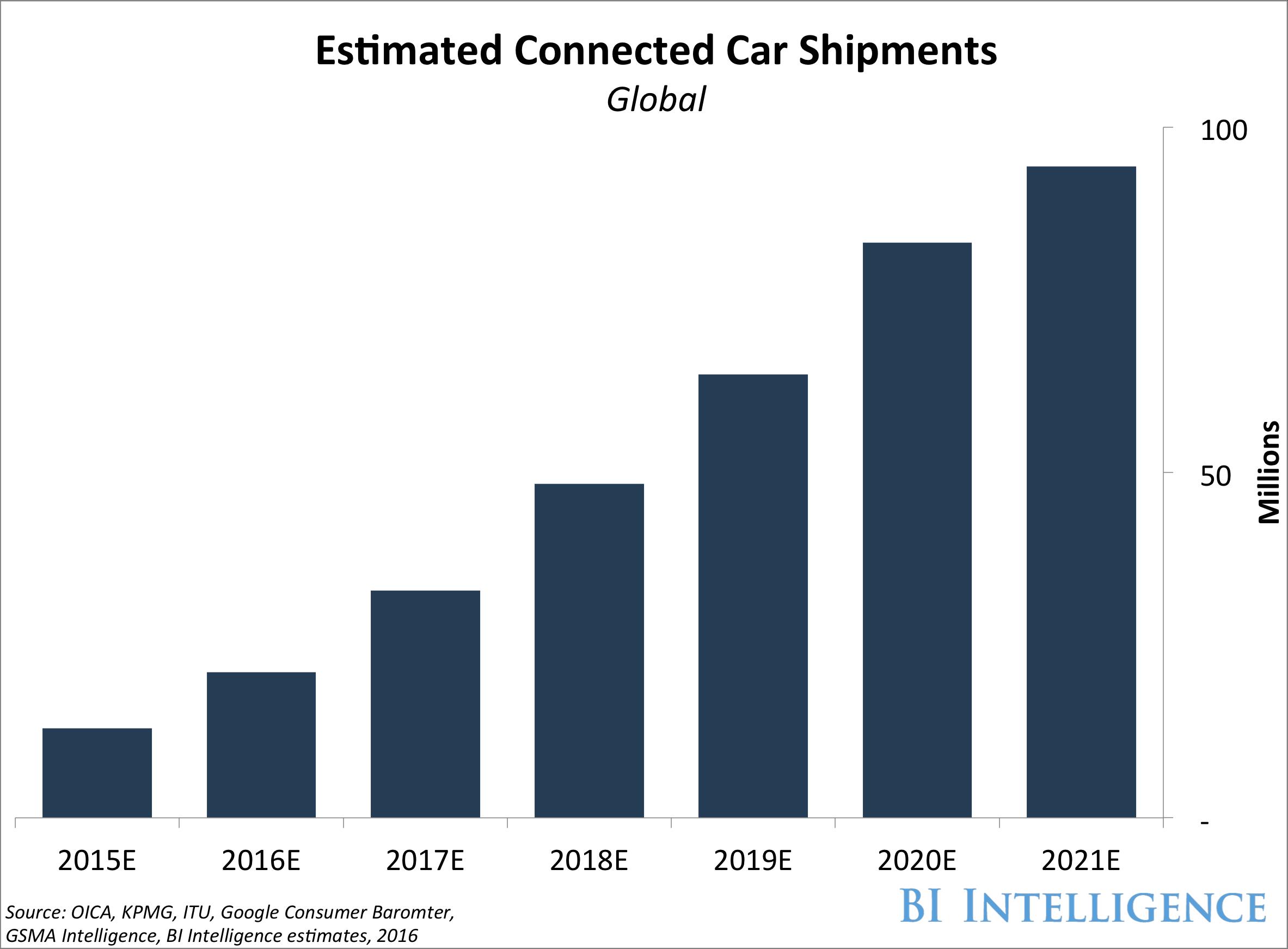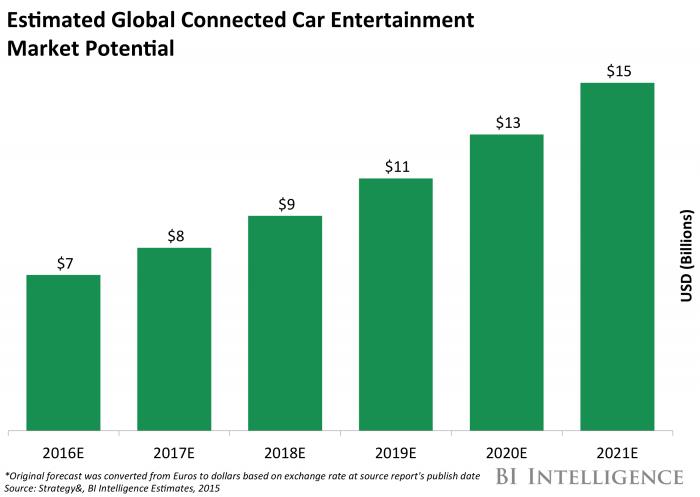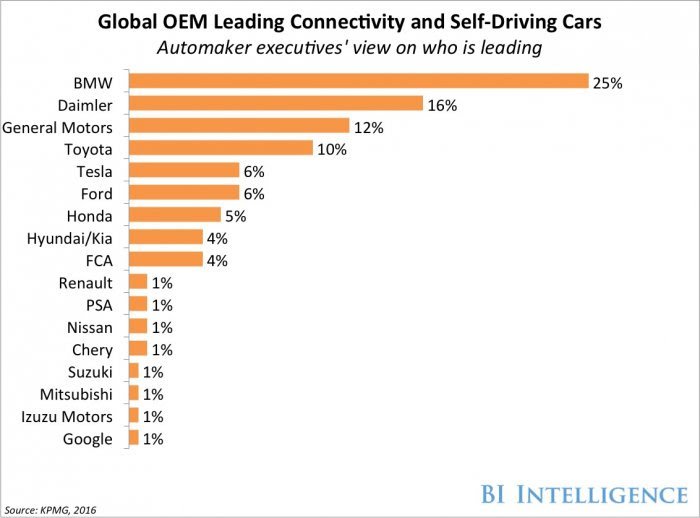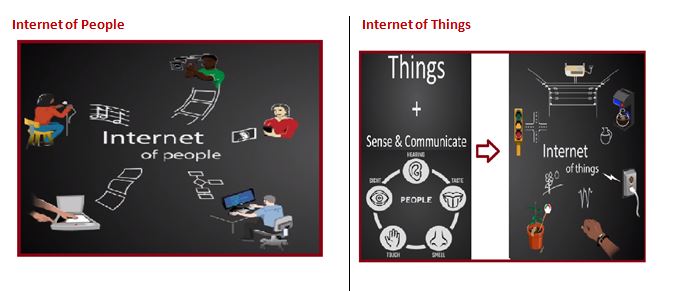Internet of Vehicles: Groundbreaking trends transforming auto industry
IoT has already played a major role in many fields such as domestic, assisted living, e-health, automation, and manufacturing and is expected to change the future of next generation of the intelligent transportation system.

Figure 1: Internet of Vehicles (source[1])
What is IoT? Why should we care?
The internet has been around for a while and it is mostly the product of people, all the data, images, videos, commerce and games have been created by the people, for the people, and it is all about the people. The internet is one of the most important and transformative technology ever invented. Internet of Things (IoT) is not just about connecting people but also connecting things.
Ultimately, we all want to lead better lives. Technology that is inherent to IoT such as the ability to sense, communicate and acquire data will help us to build processes and systems that deliver better health care through remote diagnostic and monitoring, Make towns and cities safer by monitoring weather systems, Alerting people about evident calamities like tsunami and earthquake. It can define a new comfort level by automating tasks of everyday life. It converts all the data it collects into usable forms of wisdom that can constantly help the Human race in beating the odds.
Figure 2: Internet of people vs Internet of Things (source[2]
Evolution of vehicles and Internet of Vehicles
Vehicles are the part of human life. The first technological advancement for cars came in 1911 when the automobile installed electric starters in the vehicles. According to Mashable, power steering in a car was only adopted in 1956, followed by air bags in 1984 and GPS navigation by 1994. By 2000s we started seeing some of the other driver conveniences like USB ports and Bluetooth connectivity. Today, IoT and advancements in chip design technology have paved the way for the intelligent grid in vehicles which enable them to sense the surrounding environment and help drivers with safe navigation, fog and wind detection, pollution control, speed control, traffic management by offering safer alternative routes etc.
By making use of internet of things , chip making companies like Google, Nvidia, Apple are now coming up with most efficient Application Specific Integrated chips which contain leading technologies in sensors, displays, ability to real-time computing , in-vehicle operating systems , wireless in-vehicle data communication, ability to solve complex AI and ML tasks which can literally “Connect vehicles”.
These connected cars have the ability to create, share digital information between infrastructures (like Vehicular Cloud), organizations and things (such as other vehicles), the connected vehicles are self-aware and autonomous. This is the next step in the evolution which is just around the corner: Self-drive cars or autonomous vehicles.
What can we expect from self-drive cars?
Self-drive cars bring us many benefits like reduced accident rates, increase productivity at work place, improved traffic flow etc. Apart from this, it expands the automotive business model to include a broader set of industries such as IT, retail, semiconductor, data management, consumer electronics and much more. This brings the sum of business opportunity which auto industry going to represent.
Automotive Industry Trends with IoT:
- Business insider’s (BI) premium research service predicts that, by 2021, 82% of the 94 million cars being shipped out will be connected. This is a 35% growth compared to 2016

Figure 3: Estimated car shipment by 2021 (source[3])
- Automakers are connecting their vehicles with an embedded built- in antenna and chipset or by using a smart phone. Also, integrating apps such as Google Maps, GasBuddy, Spotify etc, into cars are becoming common. The BI premium research service predicts a promising gain in-car entertainment market.

Figure 4: Estimated car entertainment market by 2021 (source[3])
- Every car maker is ramping up their efforts in creating a connected car and believes that by providing more connectivity they can boost their sales and provide the best customer service at the same time. According to a KPMG survey posted by business insider premium BMW is the champion in building connected cars. Major tech companies like AT&T, Google, Apple, Microsoft, and Sprint are all shifting their focus on connected cars.

Figure 5: Leading automakers in connectivity and self-drive cars(source[3])
The Future of Internet of Vehicles
The internet of Vehicles will only become increasingly important from here on, this will definitely bring a revolution in the transportation industry. Perhaps the most significant example of a transformation of an automobile with IoT was outlined by Tesla CEO Elon Musk. He calls it as Tesla’s “master plan “: The electric car giant is planning to create
- Solar roofs with storage battery integrated
- Create a self-drive car technology which is at-least ten times safer than manual driving
- Implement car sharing, which allows Tesla owner to earn money by lending cars
Speaking on future of the automobile industry, BI Intelligence expects vehicles which do not need a driver behind the wheel, will hit the market by 2020. It will be a very exciting prospect to witness driverless cars transforming the automobile industry.
With this, I conclude my article with some questions left for the reader to explore, such as the infrastructural challenges involved such as building smart roads, parking lots etc. And whether the self-driving automobile is a nightmare for nations with developing infrastructure.
References
- http://www.zdnet.com/pictures/the-internet-of-things-cool-connected-cars/
- https://www.youtube.com/watch?v=_AlcRoqS65E&t=671s
- http://www.businessinsider.com/internet-of-things-connected-smart-cars-2016-10
- http://www.sciencedirect.com/science/article/pii/S1389128610001568
- https://pdfs.semanticscholar.org/0831/5f0c8090c4f2afe894cd7082ba5e0ad32105.pdf
- https://www.researchgate.net/profile/Luigi_Atzori2/publication/222571757_The_Internet_of_Things_A_Survey/links/546b36df0cf2f5eb180914e5/The-Internet-of-Things-A-Survey.pdf
2 comments on “Internet of Vehicles: Groundbreaking trends transforming auto industry”
Comments are closed.



The US publisher Ward’s, estimate that as of 2010 there were 1.015 billion motor vehicles in use in the world (https://en.wikipedia.org/wiki/Motor_vehicle). Suppose all these vehicles have internet, are interconnected and constantly communicating with each other. What kind of infrastructure would we need to maintain this communication in real-time? What complexity of systems and algorithms would be employed to analyze the large amounts of data generated? What security systems would have to be implemented to ensure the safety of the passengers if they are susceptible to viruses, malware and hacking? What expertise will be needed to handle all these potential jobs? How do we then prepare ourselves now, so that when the right time comes, we are not overwhelmed with these systems?
Users who have LIKED this comment:
Hello Patricia,
You mentioned very important points that one should consider and prepare themselves to adopt changes in future.
To handle the communication and data, today we are equipped with most efficient cloud infrastructure from many providers, among them Google, Amazon, IBM, Microsoft are lead players in this business.
Today we are having most powerful GPUs, CPUs and GPUs which can handle tons of data without any difficulties, at the same time they are capable of computing AI and ML complex neural network algorithms, speech, image and voice recognition algorithms. So technically we are strong to compute these challenges which I have mentioned in my earlier blogs:
1. http://mse238blog.stanford.edu/2017/07/ramdev10/artificial-intel…trial-revolution
2. http://mse238blog.stanford.edu/2017/07/ramdev10/new-product-brea…ss-opportunities/
Also with regard to security, yes which is definitely a concern one should
consider. It may be little more than a minor nuisance if your laptop crashes or gets hacked, it becomes all the more important that an AI system does what you want it to do if it controls your car, your airplane, your pacemaker, your automated trading system or your power grid. Another short-term challenge is preventing a devastating arms race in lethal autonomous weapons. which is well written in an article:https://futureoflife.org/open-letter-autonomous-weapons/
So I strongly feel our security systems must well prepared to face the self-drive cars when they hit on road
And finally, I would also bring one more improtant issue we all should be well prepared which is socio economic barrier, which I have recently commented on one of the blogs: from a recent case study reported below
http://www.aei.org/publication/driverless-cars-are-as-much-an-infrastructure-challenge-as-a-tech-one/
to learn how much it cost to prepare for self-driving cars on north avenue street in city of Atlanta , the case study says : the city estimates it could take 50,000 environmental sensors, 20,000 pedestrian, and mobility sensors, and 10,000 cameras on top of the current 960 street lights and more than 50,000 street lights to up convert its city grid to so-called “smart street” status . This involves huge cost which government needs to allocate.
So even though we have cutting edge technology, there are social and economic barriers which need to resolve to bring self-drive cars on road